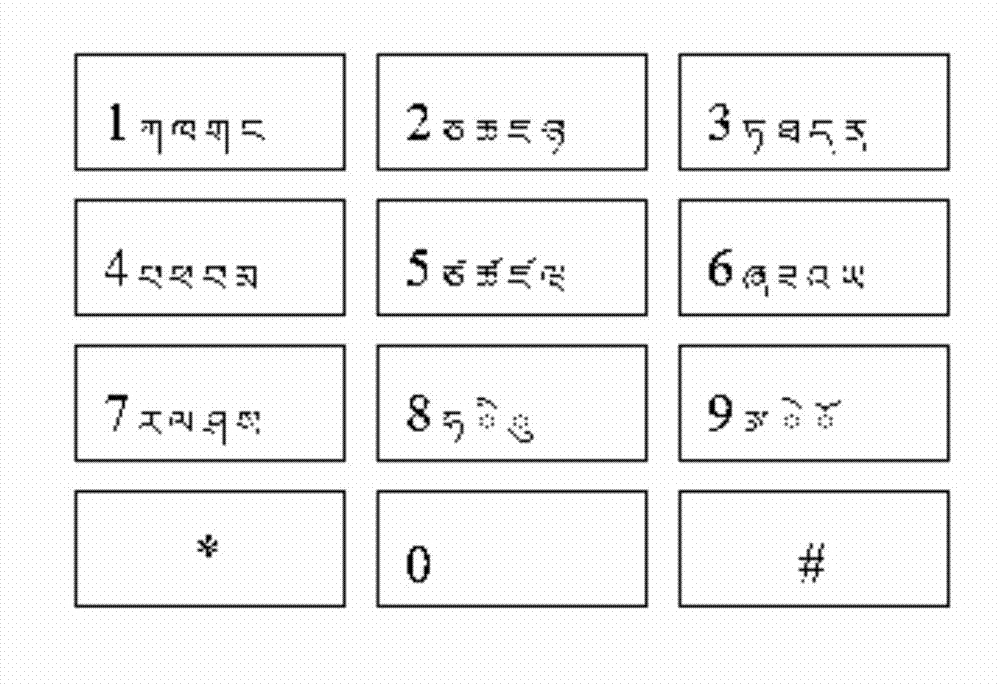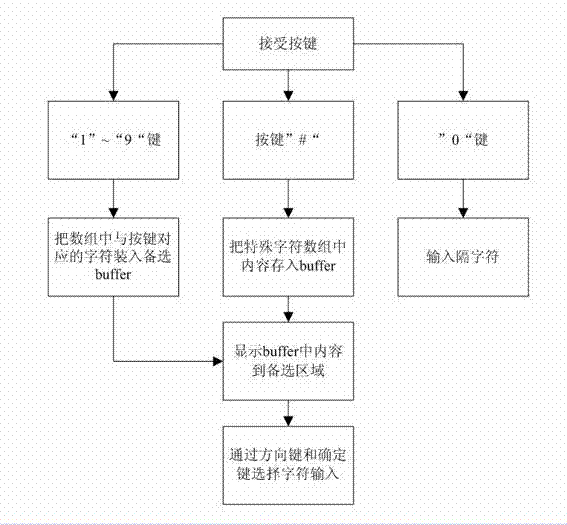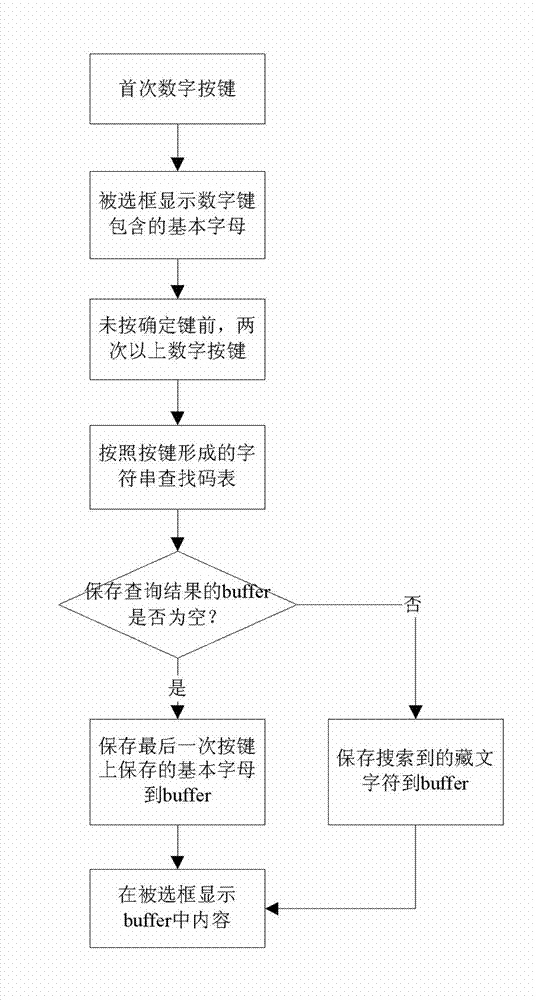Tibetan language input method of embedded device
An embedded device and input method technology, applied in the field of Tibetan input method, to achieve the effect of improving the level of informatization
- Summary
- Abstract
- Description
- Claims
- Application Information
AI Technical Summary
Problems solved by technology
Method used
Image
Examples
Embodiment 1
[0041] Embodiment 1: The Tibetan language input method of the embedded device of the present invention adopts the following steps to realize the Tibetan input of the embedded device through the remote control:
[0042] (1) Create a mapping file between the digital code of the remote control and the standard Unicode code of Tibetan characters:
[0043] 1) Thirty consonants and four vowels are respectively arranged on the number keys 1 to 9, and the numbers where the consonants and vowels are located become the digital code of the character;
[0044] 2) All Tibetan characters are composed of these letters, so a series of digital codes can be formed according to the writing method of Tibetan characters;
[0045] 3) The above numerical code and the Unicode code of the whole Tibetan character form a mapping relationship, and put it on one line in the mapping file;
[0046] 4) Form all Tibetan characters into a mapping file according to the above rules;
[0047] (2) The mapping fi...
Embodiment 2
[0053] Embodiment two: see Figure 1 ~ Figure 4According to the Tibetan language input method of the embedded device of the present invention, Tibetan information input on the set-top box of the embedded device can be realized according to the writing rules of Tibetan.
[0054] The concrete process that this embodiment realizes is as follows:
[0055] 1) Construct a digital code table
[0056] press the Tibetan alphabet figure 1 The layout table shown is placed on the corresponding keys, and then according to the Tibetan writing order, the key value of the Tibetan letter is the digital code, which is used as the first half of the mapping table, and the Tibetan characters formed by the combination are in the Unicode in the font encoding as the second half of the digital encoding. E.g:
[0057] 118 735F
[0058] 2) Initialize code table
[0059] According to the first character and the length of the search string, Tibetan characters are stored in the linked lis...
Embodiment 3
[0064] Embodiment three: see Figure 1 ~ Figure 4 The Tibetan language input method for embedded devices in this embodiment is different from Embodiment 1 in that, further, the specific numeric keyboard layout is disclosed as follows:
[0065] 1: ;2: ;3: ;4: ;5: ;
[0066] 6: ;7: ;8: ;9: ;
[0067] The soundproof characters, numbers, half numbers and punctuation marks are input through the 0 and # keys, and the specific layout is as follows: the spacer characters are laid out on the number key 0, that is, 0: ;Tibetan numbers, half numbers and punctuation characters are arranged on the "#" key, including the following characters:
[0068]
[0069] After the user presses the "#" key, the above characters will be displayed in the option column for the user to choose.
[0070] The Tibetan language input method of the embedded device of the present invention, the use method and the operation process are as follows:
[0071] 1) Enter individual Tibetan lett...
PUM
 Login to View More
Login to View More Abstract
Description
Claims
Application Information
 Login to View More
Login to View More - R&D
- Intellectual Property
- Life Sciences
- Materials
- Tech Scout
- Unparalleled Data Quality
- Higher Quality Content
- 60% Fewer Hallucinations
Browse by: Latest US Patents, China's latest patents, Technical Efficacy Thesaurus, Application Domain, Technology Topic, Popular Technical Reports.
© 2025 PatSnap. All rights reserved.Legal|Privacy policy|Modern Slavery Act Transparency Statement|Sitemap|About US| Contact US: help@patsnap.com



